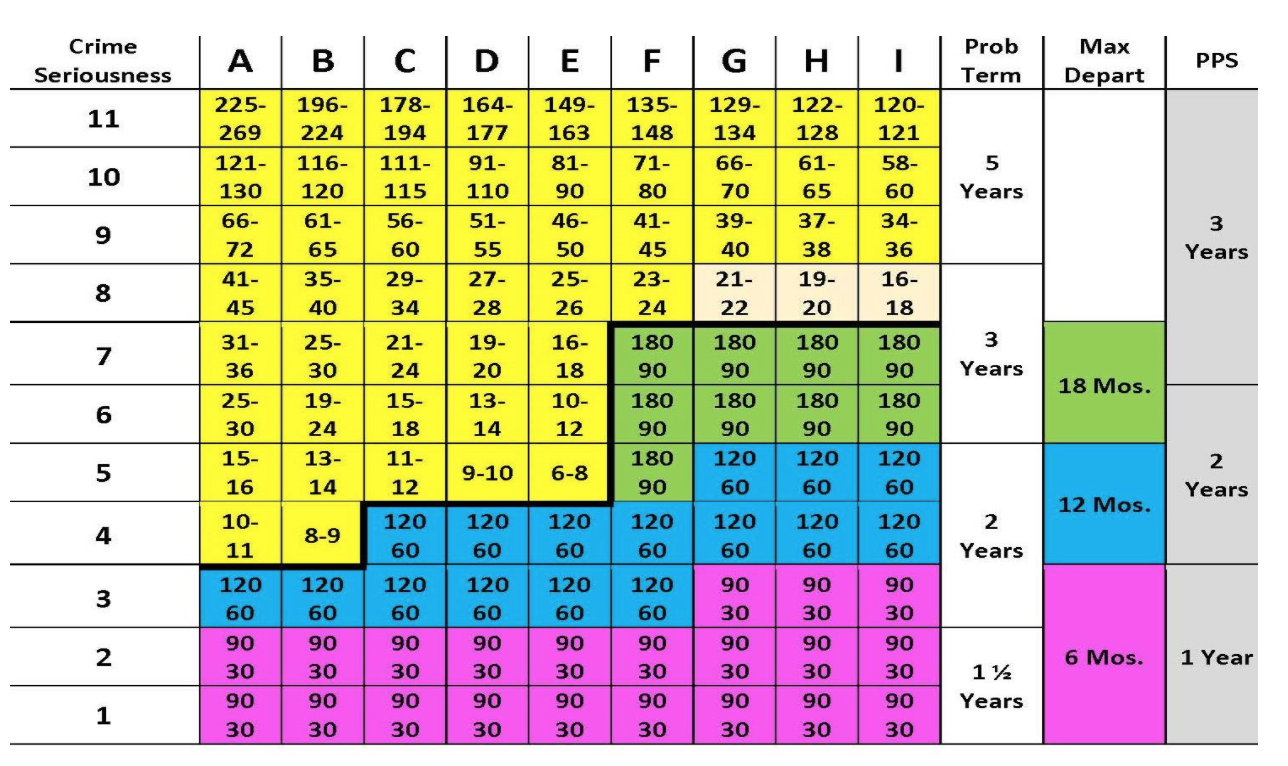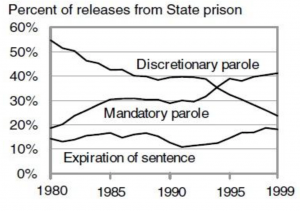David Carter
While the process to get onto parole is unique to all of the other community sanctions we have discussed so far in this section, individuals on parole are in the community. Thus, parole is often placed within the concepts of community corrections. Parole is the release (under conditions) of an individual after they have served a portion of their sentence. It is also accompanied by the threat of re-incarceration if warranted. As with most concepts in our legal system, their roots of parole can be traced back to concepts from England and Europe. However, parole today has greatly evolved based on American values and concepts. Parole in the United States began as a concept at the first American Prison Association meeting in 1870. There was much support for the ideals of reform in corrections in America at the time. Advocates for reform helped to create the concept of parole and how it would look in the U.S., and plans to develop parole went from there. Parole authorities began establishing within the States, and by the mid-1940s, all States had a parole authority. Parole Boards and State parole authorities have fluctuated over the years, but the concept is still practiced, in varying degrees today. It is different than probation, which often operates under the judicial branch. Parole typically operates under the executive branch and is aligned with the departments of corrections, as parole is a direct extension of prison terms and release. Many states operate a post-prison supervision addendum to their sentencing matrix for the punishment of individuals.
Oregon Sentencing Guidelines

As you can see from the graph, the PPS section in gray represents the recommended times for parole (post-prison supervision). Today, there are three basic types of parole in the United States, discretionary, mandatory, and expiatory.
Discretionary parole is when an individual is eligible for parole or goes before a parole board prior to their mandatory parole eligibility date. It is at the discretion of the parole board to grant parole (with conditions) for these individuals. These prisoners are generally well-behaving prisoners that have demonstrated they can function within society (have completed all required programming). Discretionary parole had seen a rapid increase in the 1980s but took a marked decrease starting in the early 1990s. In more recent years, it is continuing to return as a viable release mechanism for over 100,000 inmates a year. [1]
Mandatory parole occurs when a prisoner hits a particular point in time in their sentence. When an inmate is sent to prison, two clocks begin. The first clock is forward counting and continues until their last day. The second clock starts at the end of their sentence and starts to work backward proportional to the “good days” an inmate has. Good days are days that an offender is free from incidents, write-ups, tickets, or other ways to describe rule infractions. For instance, for every week that an offender is a good prisoner, they might get two days taken off of the end of their sentence. When these two times converge, that would be a point in which mandatory parole could kick in for them. This must also be conditioned by truth in sentencing legislation, or what is considered an 85% rule. Many states have laws in place that stipulates that an inmate is not eligible for mandatory parole until they hit 85% of their original sentence. Thus, even though the date for the good days would be before the 85% of a sentence is served, they would only be eligible for mandatory parole once they had achieved 85% of their sentence. Recently, States have begun to soften these 85% rules, as another valve to reduce crowding issues. The Hughes et al. (2001) article also provides their proportions, indicating a direct inverse relationship to discretionary parole during the 1990s [2]. As discretionary parole went down, mandatory parole went up. This is logical though, as once they had passed a date for discretionary parole, the next date would be an inmate’s mandatory parole date. As you can see from the image below, these proportions of releases switched in the 1990s.
Parole Releases

Perhaps most troubling is the Expiatory Release. We see a slow increase of expiatory release in the chart, and this has continued to climb in the 2000s. Expiatory release means that a person has served their entire sentence length (and sometimes more). Based on the need to release individuals to accommodate incoming prisoners, this usually means that an inmate has misbehaved enough to nullify their “good days.” This is unfortunate, because of the three types of release, it could be argued that these are the inmates that need the most post-prison supervision. And yet, these are the inmates that are typically receiving the smallest amounts of parole.
Parole Success
It should again come as no surprise as to the effectiveness of parole, considering how many of the other community-based sanctions are operating. Successful parole completion rates hover around 50%, given a particular year. In the Hughes et al. (2001) article just mentioned, successful completion was roughly 42% in 1999. The same issues for failure that are found in probation completion are found in parole completion, to include: revocation failures, new charges, absconding, and other infractions. This lower than expected success rate has prompted many critics to argue parole. It is suggested that we are being too lenient on some while keeping lower-level inmates in prison too long. It is also argued that we are releasing dangerous individuals out into the community. Whatever the criticisms are, it is certain that we are bound to use parole as a function of release, even if it is only on paper. For example, California has a concept called non-revocable parole. The basic premise of this is: as long as you do not violate your terms of parole, your parole will be solely on paper, with no parole office check-ins. Additionally, no one will come out to your dwelling to monitor you. Effectively, this version of parole is not enforceable, hence why it is considered as parole on paper only. But, the questions around parole still remain. What are we to do with the hundreds of thousands of offenders we let out of prison each year? Do they need more assistance than a bus ticket back to their county of residence? How should we be doing parole in the United States? A more modern term for parole is called re-entry. The next section covers current issues within corrections, to include what we do for inmates who are re-entering society.
- Hughes, W., & Beck (2001).
↵Trends in State Parole, 1990-2000. Bureau of Justice Statistics Special Report. ODJ.
- Hughes, T., Wilson, D., & Beck, A. (2001). Trends in State parole, 1990-2000. Washington, DC: Bureau of Justice Statistics, Special Report, NCJ 184735 https://www.bjs.gov/content/pub/pdf/tsp00.pdf . ↵

